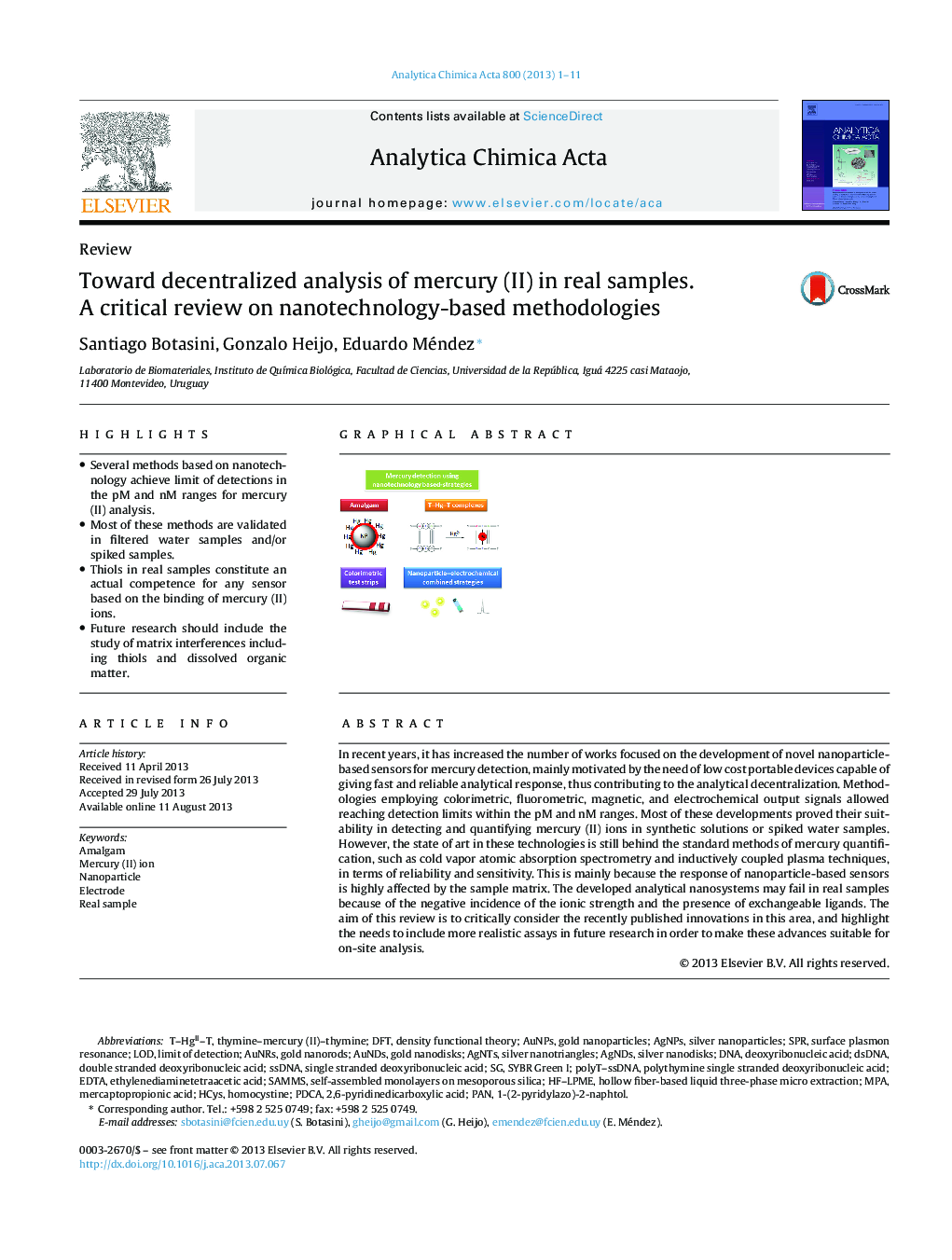| Article ID | Journal | Published Year | Pages | File Type |
|---|---|---|---|---|
| 1164371 | Analytica Chimica Acta | 2013 | 11 Pages |
•Several methods based on nanotechnology achieve limit of detections in the pM and nM ranges for mercury (II) analysis.•Most of these methods are validated in filtered water samples and/or spiked samples.•Thiols in real samples constitute an actual competence for any sensor based on the binding of mercury (II) ions.•Future research should include the study of matrix interferences including thiols and dissolved organic matter.
In recent years, it has increased the number of works focused on the development of novel nanoparticle-based sensors for mercury detection, mainly motivated by the need of low cost portable devices capable of giving fast and reliable analytical response, thus contributing to the analytical decentralization. Methodologies employing colorimetric, fluorometric, magnetic, and electrochemical output signals allowed reaching detection limits within the pM and nM ranges. Most of these developments proved their suitability in detecting and quantifying mercury (II) ions in synthetic solutions or spiked water samples. However, the state of art in these technologies is still behind the standard methods of mercury quantification, such as cold vapor atomic absorption spectrometry and inductively coupled plasma techniques, in terms of reliability and sensitivity. This is mainly because the response of nanoparticle-based sensors is highly affected by the sample matrix. The developed analytical nanosystems may fail in real samples because of the negative incidence of the ionic strength and the presence of exchangeable ligands. The aim of this review is to critically consider the recently published innovations in this area, and highlight the needs to include more realistic assays in future research in order to make these advances suitable for on-site analysis.
Graphical abstractFigure optionsDownload full-size imageDownload as PowerPoint slide
